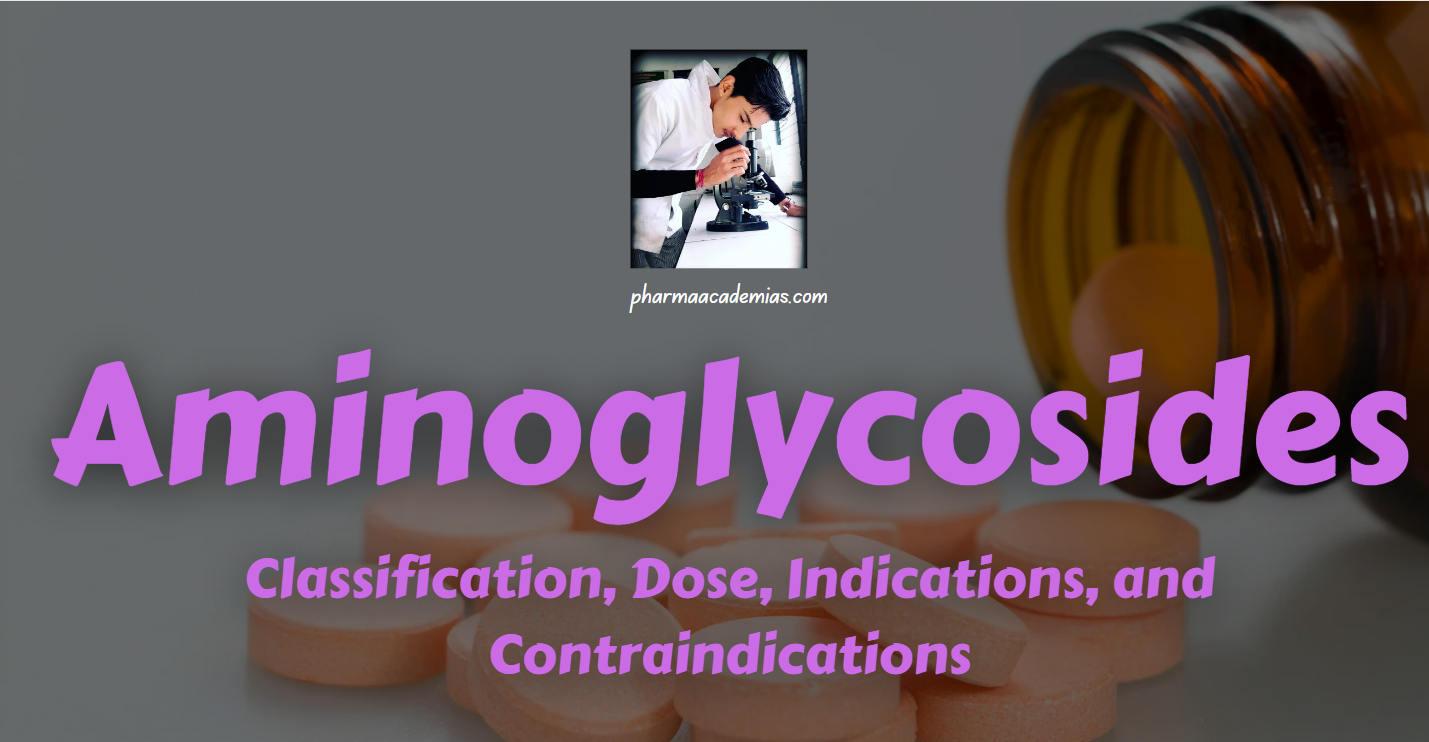Various species of bacteria, primarily actinomycetes, give rise to a class of antibiotics known as aminoglycosides. These antibiotics are characterized by their chemical structure, consisting of amino sugars connected by glycosidic linkages. They earn recognition for their broad-spectrum antibacterial activity, particularly against Gram-negative bacteria. Aminoglycosides play a crucial role in the treatment of serious bacterial infections.
1. Classification of Aminoglycosides
Aminoglycosides are a class of antibiotics that inhibit bacterial protein synthesis. The main members of this class include:
Streptomycin:
Streptomycin is an antibiotic medication that belongs to the class of aminoglycosides. It was the first antibiotic discovered from the genus Streptomyces and the first effective treatment for tuberculosis (TB). Albert Schatz, Elizabeth Bugie, and Selman Waksman first isolated streptomycin in 1943.
Streptomycin inhibits protein synthesis in bacteria, particularly by binding to the bacterial ribosome. This interference with protein production disrupts the growth and reproduction of bacteria, making it effective against certain bacterial infections.
Gentamicin:
Gentamicin is another antibiotic that belongs to the aminoglycoside class, similar to streptomycin. It is derived from the bacterium Micromonospora purpurea and is commonly used to treat various bacterial infections.
Gentamicin inhibits protein synthesis in bacteria by binding to the bacterial ribosome. This interference with protein production disrupts the growth and reproduction of bacteria, making gentamicin effective against a wide range of Gram-negative and some Gram-positive bacteria.
Amikacin:
Amikacin is another aminoglycoside antibiotic closely related to gentamicin. It is derived from Streptomyces kanamyceticus and is used to treat various bacterial infections. Like other aminoglycosides, amikacin works by inhibiting bacterial protein synthesis.
Amikacin is often employed when other antibiotics are ineffective, or the bacteria causing the infection are resistant to other drugs. It is particularly effective against Gram-negative bacteria, including Escherichia coli, Klebsiella species, and Pseudomonas aeruginosa. Amikacin is also used to treat some Gram-positive infections, such as those caused by Mycobacterium avium complex.
Tobramycin:
Tobramycin is another antibiotic belonging to the aminoglycoside class, similar to gentamicin and amikacin. It is derived from Streptomyces tenebrarius and primarily treats various bacterial infections.
Like other aminoglycosides, tobramycin works by inhibiting bacterial protein synthesis. It is effective against a broad spectrum of Gram-negative bacteria, including Pseudomonas aeruginosa, Escherichia coli, Klebsiella species, and other bacteria that can cause respiratory, urinary tract, skin, and other infections.
Kanamycin:
Kanamycin is an antibiotic that belongs to the aminoglycoside class, similar to gentamicin, amikacin, and tobramycin. It is derived from Streptomyces kanamyceticus and is used to treat bacterial infections.
Kanamycin works by inhibiting bacterial protein synthesis, disrupting the production of proteins in susceptible bacteria. It is effective against a variety of Gram-negative and some Gram-positive bacteria. However, its use has diminished over time due to the availability of other aminoglycosides with better safety profiles.
2. Dose of Aminoglycosides
Dosing Regimen:
Aminoglycosides are usually administered parenterally (intravenously or intramuscularly).
The dose and frequency depend on the specific aminoglycoside, the patient’s weight, renal function, and the type of infection.
3. Indications for Aminoglycosides
Gram-Negative Infections:
Aminoglycosides are particularly effective against Gram-negative bacteria, including Escherichia coli, Klebsiella, Pseudomonas aeruginosa, and Enterobacter species.
Commonly used in urinary, intra-abdominal, and respiratory tract infections.
Combination Therapy:
Often used in combination with beta-lactam antibiotics (e.g., penicillins or cephalosporins) for synergistic effects, especially in serious infections like sepsis.
Mycobacterial Infections:
Streptomycin is used in the treatment of tuberculosis
4. Contraindications of Aminoglycosides
Renal Impairment:
Nephrotoxicity can occur with aminoglycosides, and healthcare providers need to exercise caution in patients with pre-existing renal impairment.
Monitoring of renal function is crucial during therapy.
Pregnancy and Lactation:
Aminoglycosides may cross the placenta and can be excreted in breast milk.
The potential benefits should be weighed against the risks in pregnant and breastfeeding women.
Neuromuscular Disorders:
Aminoglycosides may exacerbate neuromuscular disorders, such as myasthenia gravis.
Hypersensitivity:
Contraindicated in individuals with a known hypersensitivity to aminoglycosides.
5. Adverse Effects
Nephrotoxicity:
Aminoglycosides can cause kidney damage, especially in high doses or prolonged use.
Regular monitoring of renal function is essential.
Ototoxicity:
Aminoglycosides may cause irreversible damage to the inner ear, leading to hearing loss and vestibular dysfunction.
Neuromuscular Blockade:
Aminoglycosides can enhance the effects of neuromuscular blocking agents, leading to respiratory paralysis.
Allergic Reactions:
Hypersensitivity reactions, although rare, can occur.
6. Precautions and Considerations
Therapeutic Drug Monitoring:
Regular monitoring of serum drug levels is necessary to ensure therapeutic efficacy while minimizing toxicity.
Individualized Dosing:
Individualize dosing based on age, weight, renal function, and the specific pathogen being treated.
Duration of Therapy:
To minimize the risk of toxicity, healthcare providers should avoid prolonged use of aminoglycosides whenever possible.
Aminoglycosides are potent antibiotics with a broad spectrum of activity, particularly against Gram-negative bacteria. Their use requires careful consideration of potential adverse effects, individual patient factors, and monitoring to ensure efficacy and safety. They are often reserved for serious infections where their unique properties can be most beneficial.

